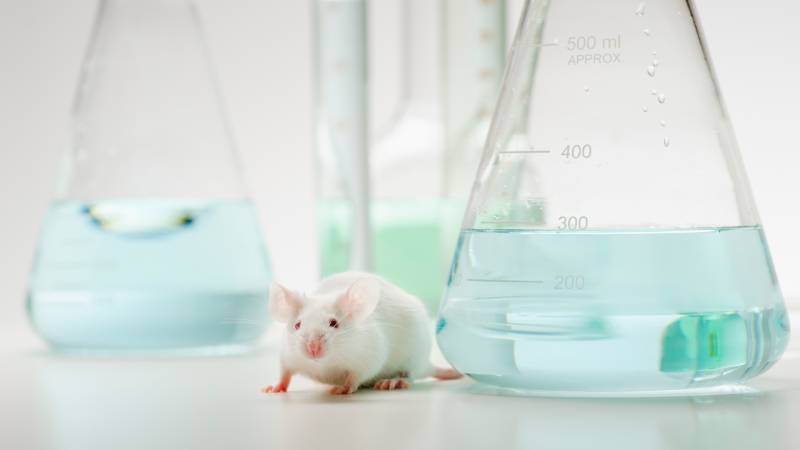Ending Animal Testing at EPA Will Protect Human Health

The U.S. Environmental Protection Agency recently entered the 21st century when it announced that it will completely eliminate testing on mammals by 2035—and instead focus on more informative and efficient technologies based on human biology, such as organs-on-chips and predictive modeling.
Currently, hundreds of thousands of animals are killed every year to test chemicals, pesticides, cleaning products, and other substances that are regulated by the EPA. But it has become clear that the results are often not relevant to human health, due to the significant differences across species.
Animal tests were never fully evaluated to demonstrate that they accurately predict human response, and in practice most aren’t very reproducible. By contrast, human cell-based methods for respiratory toxicity, skin allergy, and other effects are undergoing thorough evaluation and peer review to ensure that they are giving us better, more human-relevant information. Nonanimal methods also provide information that animal tests can’t provide, such as how we react to mixtures of chemicals, or how sensitive populations—such as those with asthma—fare.
To some, the EPA’s announcement to transition to these methods may have seemed sudden. But the EPA has been carefully working with scientists and other regulatory agencies around the world toward this goal for 20 years.
I was part of the effort to move toward these new approaches, as fellow EPA senior regulators and scientists realized that only a small fraction of the chemicals in commerce had good information on their potential health effects.
We realized that we could not “test our way out” of this dilemma using traditional, largely animal-based testing approaches to understand the potential for harm from tens of thousands of untested chemicals, because it would be too cost-prohibitive and time-consuming. Thus, around 2002, the EPA established the National Center for Computational Toxicology to help develop the tools and methods needed to accurately predict the potential for harm and reliably inform decisions, and in 2007, the EPA commissioned the National Academies of Sciences to evaluate the potential for using more informative and efficient approaches to chemical testing. As a result, the NAS published the report Toxicity Testing in the 21st Century: A Vision and a Strategy, which called for modernizing the toxicity testing of chemicals using nonanimal approaches.
Based on its recommendations, scientists began educating Congress on the importance of updating the Toxic Substances Control Act to move the EPA’s chemical test requirements away from animal testing. When the Lautenberg Chemical Safety Act became law in 2016, it included measures modernizing industrial chemical testing methods.
Protecting human and environmental health is of course the EPA’s first responsibility, and the agency has taken great care to develop and apply new approaches to safety evaluation in such a way that health and environmental protection are not merely maintained but enhanced.
The new approaches have been phased in carefully, starting with an in vitro approach for assessing antimicrobial cleaning products for eye irritation in 2009, and more recently with the acceptance of in vitro methods for skin sensitization for chemicals and some pesticides.
To understand and address the public's concerns and address, community engagement was pursued through groups such as the Pesticide Program Dialog Committee, comprised of representatives from a variety of communities, including agricultural workers and environmental advocates.
Development of new approaches is critical to the successful implementation of the Lautenberg Act and the agency’s overall mission. Now it’s up to all stakeholders including scientists, advocates, and Congress to help make sure that the EPA honors its commitment to “protect human health and the environment by using cutting-edge, ethically sound science …without animal testing.”
John R. Fowle III, PhD, DABT, is the Principal for Science to Inform, LLC, a sole practitioner consultancy, providing support to develop, evaluate, and apply more informative and efficient approaches to evaluate safety and inform decisions. He retired from the EPA after 33 years of service in a variety of positions, including as Science Advisor to Senator Daniel Patrick Moynihan and Deputy Director of the Health Effects Division in the Office of Pesticide Programs, where he directed efforts to begin to implement alternative testing approaches at the agency.







